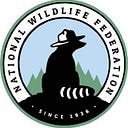How the Red Rocks of Utah Keep Calling Me Back
Amy Maillet loves to get lost in the ecosystem and write about her adventures on Momma Earth. Her home is Colorado.
Every many, every woman, carries in heart and mind the image of the ideal place, the right place, the one true home, known or unknown, actual or visionary… For myself I’ll take Moab, Utah. I don’t mean the town itself, of course, but the country that surrounds it — the canyonlands. The slickrock desert. The red dust and the burnt cliffs and the lonely sky — all that which lies beyond the end of the roads. — Edward Abbey
The untouched wilderness of southeastern Utah was a place I wanted to explore once I read Edward Abbey’s Desert Solitaire in college. I craved drowning in the expanse of the desert and I worried it was disappearing, since Abbey already claimed it to be gone in 1968.
Almost forty years later, I managed to mirror Abbey by arriving in the desert in the dark, in April. We were moving slowly on a dirt road towards Kane Creek and everything in the car jangled. When we stopped at water crossing, the air felt cool and there was sand underfoot. My boyfriend told me to tread carefully so as not to destroy the crusty soil that took many years to grow.
This was the first of a handful of annual spring escapes to welcome the camping season early. We convened with a sizeable group of friends, tents and toys, and plenty of energy in tow. In the morning, I marveled at the great rock walls surrounding our camp. The rusty orange soil and the baked black rock felt primal — a place weathered by time.
Each day, smaller packs set out to reckon with a variety of adventures. I mostly chose to be humbled on trails too rocky and sandy for my novice mountain biker ability. My ego fell away on the steps of Amasa Back and I found my endurance on the climbs of Gemini Bridges. I carried the badges of many rides back to the campfire at night, where we sat with food and music and plenty of recounts from the day. The stars usually smiled down on our laughter; though there were a few years when we cowered under tents while rain poured overhead.
At least once a trip, the group would race up to Hurrah Pass to watch the sunset. We’d look out over the Potash ponds towards Dead Horse Point and marvel at the sea of desert before us.
Slowly, the tents turned to popup campers and the late nights got too loud for the children we didn’t want to wake. Our crew dispersed to different adventures, leaving Moab in the dust for many years.
Seven years later a smaller subset of the group returned for Thanksgiving to camp by Slickrock. The boyfriend was now my husband; we had two kids and a camper on the back of a truck. My adventure du jour had become running. I had a Forest Gump moment on an empty road with views of red rock monument spires and the snow-covered La Sal Mountain range off in the distance.
By day we hiked Slickrock and the kids took climbing lessons from our friend. We setup a giant tent and had Thanksgiving with all the fixings of home. We woke up to snow on the final morning, a sight I never thought I’d see in the dessert.
Knee deep in the pandemic, we were drawn again to Moab with just one other family and two tow-behind campers. We camped across from Klondike Buffs and watched the sun set on the red rocks of Arches National Park in the distance. In the morning we woke to a rainbow of colors on a hot air balloon landing adjacent to our camp.
The kids spent the day collecting rocks. I mountain biked Klondike Bluffs with a friend, remembering how the desert likes to taunt my skills. Both families hiked in to Arches National Park and sat under the shade of Tower Arch. We walked a fair amount back to camp barefoot, on sand so soft and cool it felt like a beach.
After 15 years, we finally visited Dead Horse Point State Park. I had vertigo from the depth of land carved away by what is currently known as the Colorado River. Staring back over the Potash ponds towards Hurrah Pass, I marveled at how beautiful the passing of time is; the years carving an expanse you can’t dream up on your own.
…………………………………………………………………………………….
So many of our country’s parks and public lands written about in these love notes would not exist but for the Land and Water Conservation Fund (LWCF). Capitol Reef National Park mentioned above was supported with funds from LWCF. This important conservation program was permanently funded when Congress passed the Great American Outdoors Act last year. You can learn more about the Land and Water Conservation Fund here.
Would you like to write about public lands that you cherish? Please email Mary Jo Brooks at brooksm@nwf.org for guidelines. You’ll get this cool sticker as a thank you.

